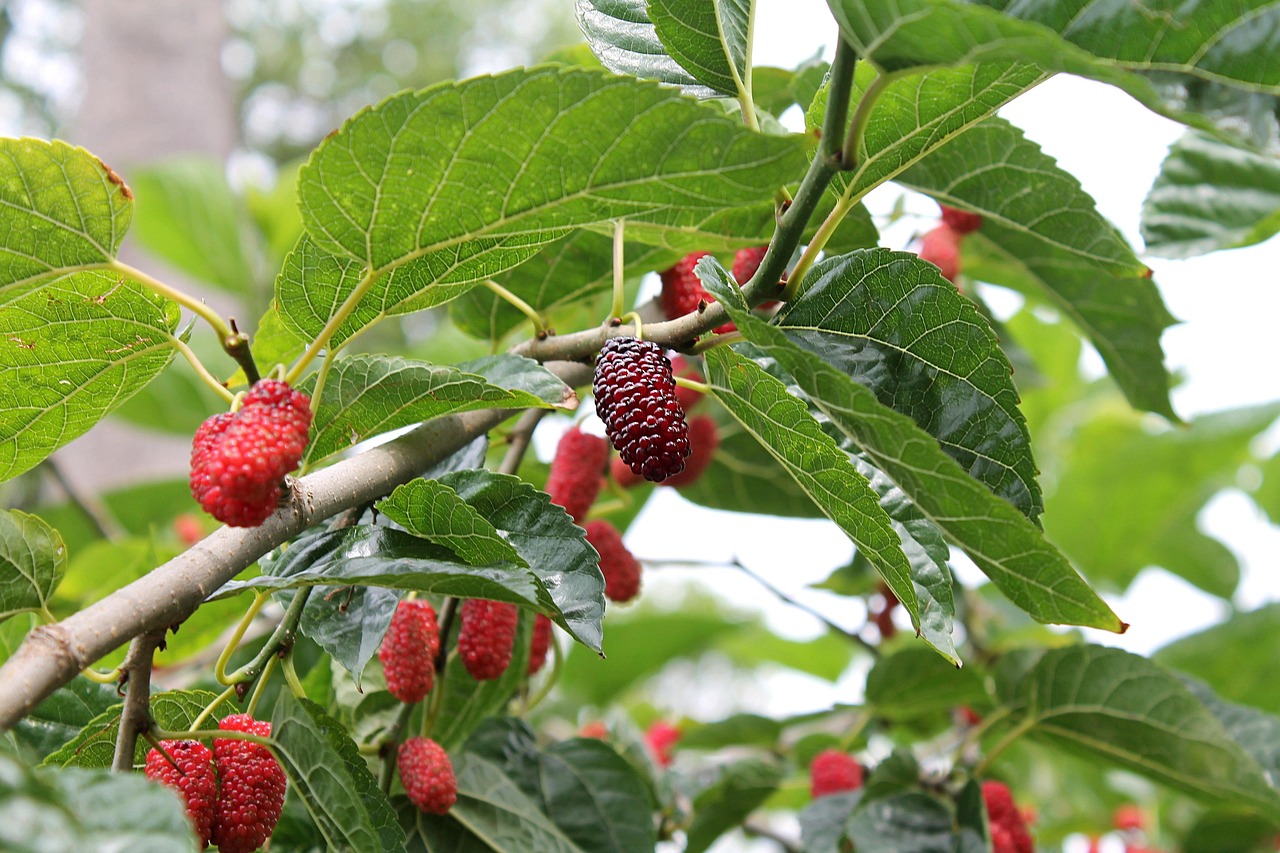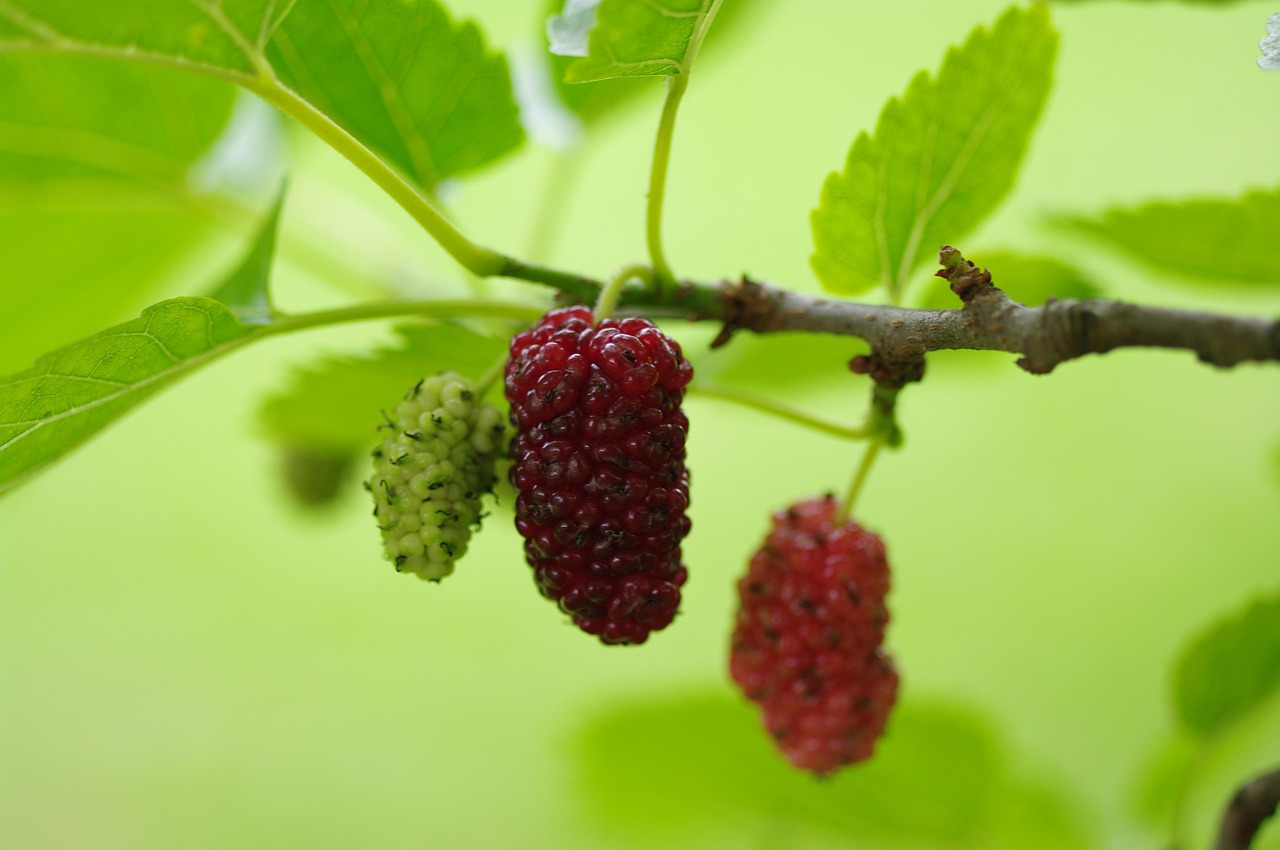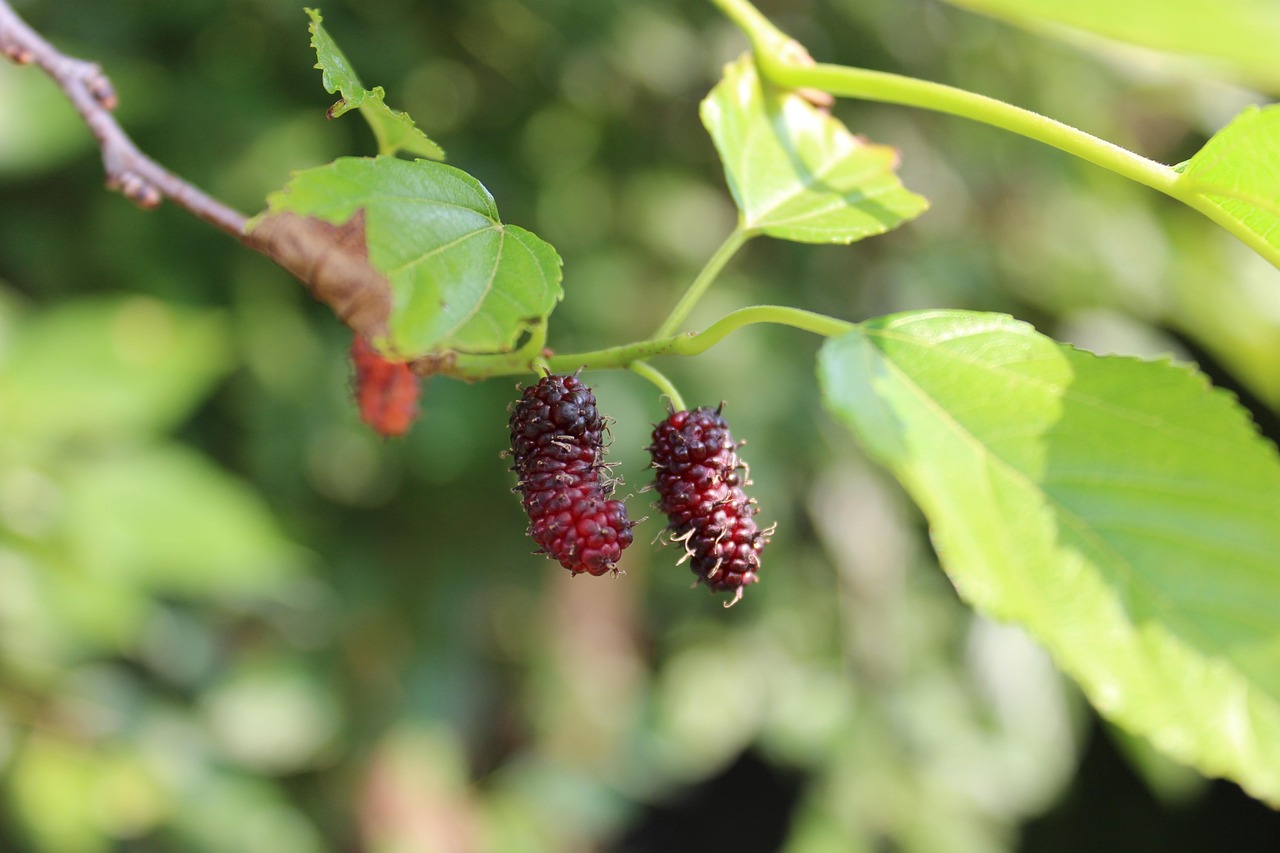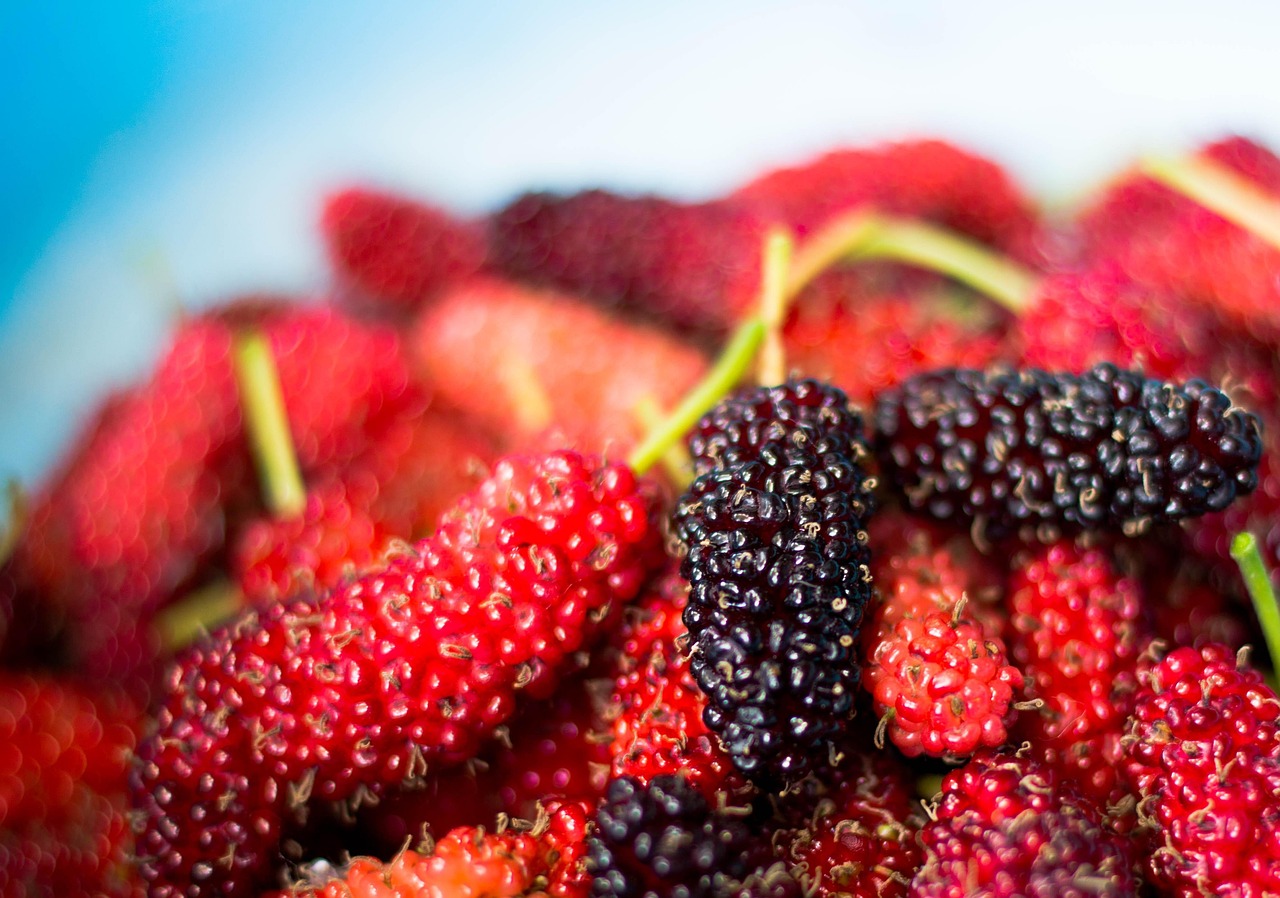The growth rate of mulberry trees varies by species, climate, and care. Generally, they grow rapidly, reaching a height of 10 to 30 feet in just a few years. With proper conditions, some trees can bear fruit as early as their second year.
Understanding Mulberry Trees
Mulberry trees belong to the Moraceae family and are renowned for their delicious berries. These trees are native to various regions, including Asia, Africa, and the Americas. They thrive in temperate and subtropical climates. The fruit of the mulberry tree is not only tasty but also rich in vitamins and antioxidants.

There are several species of mulberry trees, including:
- White Mulberry (Morus alba)
- Red Mulberry (Morus rubra)
- Black Mulberry (Morus nigra)
Each species has its own unique characteristics, making them suitable for different environments and purposes. For instance, white mulberries are often cultivated for silkworms, while black mulberries are prized for their sweet fruit. Understanding the growth rate of these trees is essential for successful cultivation, especially for those looking to harvest fruit quickly.
Growth Rates of Different Mulberry Species
Mulberry trees typically exhibit a vigorous growth rate. Under optimal conditions, many species can grow between 24 to 36 inches per year. The following table summarizes the average growth rates of common mulberry species:

| Species | Average Height at Maturity | Growth Rate (inches/year) | Time to Fruit Production |
|---|---|---|---|
| White Mulberry | 30-50 feet | 24-36 inches | 2-3 years |
| Red Mulberry | 30-50 feet | 24-36 inches | 3-4 years |
| Black Mulberry | 30-50 feet | 20-30 inches | 2-4 years |
The growth rate is influenced by several factors, including soil quality, water availability, and sunlight exposure. Mulberries prefer well-drained soil rich in organic matter. They thrive in full sun but can tolerate partial shade. Proper watering is essential during their early growth stages to encourage deep root development.
Factors Affecting Growth Rate
Several critical factors influence the growth rate of mulberry trees:
- Soil Quality: Well-drained, fertile soil enhances growth. Adding organic matter can boost nutrient levels.
- Watering: Regular watering during dry spells promotes healthy growth. However, overwatering can lead to root rot.
- Sunlight: Full sun exposure encourages faster growth and greater fruit production.
- Temperature: Mulberries thrive in warm temperatures. They grow best when temperatures range from 70°F to 85°F.
- Pest Management: Keeping pests at bay ensures the tree remains healthy and productive.
Cultivators should monitor these factors closely to optimize the growth rate and ensure a fruitful harvest. Regular pruning can also help maintain the shape of the tree and promote better air circulation, which further enhances growth rates.

By understanding these elements, gardeners can create an ideal environment that encourages their mulberry trees to grow vigorously and produce fruit quickly. The right techniques and conditions can lead to an abundant harvest within just a few years, making mulberries an attractive option for home growers and commercial farmers alike.
Selecting the Right Variety
Choosing the right mulberry variety is crucial for achieving fast fruiting. Different species have differing growth rates and fruiting times. When selecting a variety, consider your local climate and intended use for the fruit.
If you are looking for fast production and high yields, white mulberries may be your best option. They tend to establish quickly and are known for their sweet berries. Red mulberries also produce well but may take slightly longer to bear fruit compared to white varieties.

In contrast, black mulberries are slower growers but offer unique flavors that some gardeners prefer. Each type has its benefits, so understanding these differences can help in making an informed decision based on your specific gardening goals.
Optimal Growing Conditions for Mulberry Trees
To achieve the best growth rates and fruit production from mulberry trees, it is essential to create optimal growing conditions. These conditions include factors such as soil type, climate, watering practices, and fertilization. Each of these elements plays a key role in how quickly and effectively your mulberry tree will grow.
Soil Requirements
The ideal soil for mulberry trees is loamy or sandy soil that provides good drainage. Heavy clay soils may retain too much water, leading to root rot. Here are some characteristics of suitable soil:
- Well-Drained: The soil should allow excess water to escape easily.
- Nutrient-Rich: Organic matter such as compost can enhance soil fertility.
- pH Level: A pH between 6.0 and 7.5 is optimal for mulberries.
Before planting, conducting a soil test can provide information about nutrient levels and pH, allowing for necessary amendments to be made.
Climate Considerations
Mulberry trees thrive in a variety of climates but have specific temperature preferences. They prefer temperate to subtropical regions where the following conditions are present:
- Temperature Range: Ideal growth occurs when temperatures are consistently between 70°F and 85°F.
- Frost Protection: Young trees should be protected from late spring frosts, which can damage blossoms and developing fruit.
- Sunlight Exposure: Full sun is crucial for optimum growth and fruit production; at least six hours of direct sunlight daily is recommended.
Watering Practices
Proper watering is vital for mulberry trees, especially during their formative years. Here’s how to manage watering:
- Establishment Period: Water young trees deeply once a week during dry spells to encourage deep root growth.
- Mature Trees: Once established, they require less frequent watering, but check the soil moisture regularly.
- Avoid Overwatering: Ensure that the roots do not sit in waterlogged conditions. This can lead to fungal diseases.
Fertilization Techniques
Fertilization can significantly enhance the growth rate and fruit production of mulberry trees. Proper nutrient management is essential for healthy plants. Consider the following fertilization techniques:
Types of Fertilizers
There are various types of fertilizers that can be used for mulberry trees:
- Organic Fertilizers: Compost or well-rotted manure can improve soil structure and add nutrients without the risk of over-fertilization.
- Granular Fertilizers: Slow-release fertilizers formulated specifically for fruit trees can provide balanced nutrients over time.
- Liquid Fertilizers: These can be used for quick nutrient uptake, especially during the growing season.
When to Fertilize
The timing of fertilization is critical to ensure optimal growth. Here are some guidelines:
- Spring Application: Fertilize in early spring just as new growth begins.
- Mid-Season Boost: A second application in mid-summer can help support fruit development.
- Avoid Late Application: Do not fertilize late in the season as this may encourage new growth that could be damaged by winter cold.
Pest and Disease Management
Healthy mulberry trees can resist pests and diseases better than weak ones. However, it is important to remain vigilant about potential threats. Here are common pests and diseases to watch for:
Common Pests
- Scale Insects: These pests suck sap from leaves and stems, weakening the tree.
- Aphids: Small insects that can cause leaf curling and stunted growth.
- Caterpillars: Various species may feed on leaves, reducing foliage and overall vigor.
Disease Prevention
Mulberry trees can also be susceptible to certain diseases, including:
- Crown Rot: Caused by poor drainage; maintain proper watering practices to prevent this issue.
- Leaf Spot: Fungal infections that can lead to defoliation; consider applying fungicides if necessary.
Regular inspections and maintaining good cultural practices can help mitigate these issues. Prompt action at the first sign of trouble can protect your mulberry trees and support their growth rate.
By ensuring optimal growing conditions, selecting the right variety, and managing pests and diseases effectively, gardeners can enjoy a fruitful harvest of mulberries in a relatively short time frame.
Pruning Techniques for Enhanced Growth
Pruning is a crucial practice for maintaining the health and productivity of mulberry trees. Proper pruning encourages vigorous growth, shapes the tree, and improves air circulation, which can lead to better fruit production. Understanding when and how to prune is essential for optimal results.
When to Prune Mulberry Trees
The timing of pruning can affect the overall health and productivity of mulberry trees. Here are some guidelines for when to prune:
- Late Winter to Early Spring: The best time to prune is just before new growth begins. This timing helps minimize stress on the tree.
- After Fruiting: For trees that bear fruit, light pruning can be done after harvesting to maintain shape without affecting future yields.
Pruning Techniques
There are several techniques that can be used when pruning mulberry trees:
- Thinning: Remove select branches to improve air circulation and sunlight penetration.
- Heading Back: Cut back a portion of a branch to encourage bushier growth. This is especially useful for young trees.
- Removing Dead or Diseased Wood: Regularly inspect and remove any dead, damaged, or diseased branches to maintain tree vitality.
Using clean, sharp tools can help prevent injury to the tree and reduce the risk of disease transfer during pruning.
Harvesting Mulberries
Harvesting mulberries at the right time is essential for enjoying their sweet flavor and ensuring maximum yield. Knowing the signs of ripeness will help you gather fruit effectively and efficiently.
Signs of Ripeness
Mulberries are typically ready for harvest when they exhibit the following characteristics:
- Color Change: Depending on the species, ripe mulberries may turn red, purple, or black. Look for a deep, rich color.
- Softness: Ripe berries will feel slightly soft when gently squeezed. If they are too firm, they may not be ready.
- Falling Fruit: Overripe berries may fall from the tree. If you notice many berries on the ground, it may be time to harvest.
Harvesting Techniques
When harvesting mulberries, consider the following techniques to minimize damage to the fruit and tree:
- Use Gentle Hands: Gently twist or pull the berries from the stem rather than yanking them off.
- Harvest in Cool Conditions: Early morning or late evening is ideal for harvesting, as cooler temperatures help preserve fruit quality.
- Collect in Containers: Use shallow containers to prevent crushing the berries during transport.
Post-Harvest Care
After harvesting, proper care of your mulberries is important to maintain their quality. Here are some steps to follow:
Storage Methods
Proper storage will extend the shelf life of freshly harvested mulberries:
- Refrigeration: Store berries in a breathable container in the refrigerator for up to a week.
- Freezing: For long-term storage, freeze mulberries on a baking sheet before transferring them to airtight containers or freezer bags.
- Canning or Jamming: Consider making jams or preserves if you have an abundant harvest.
Caring for the Tree After Harvest
After harvesting, it is also important to care for your mulberry tree:
- Watering: Ensure the tree receives adequate water, especially during dry periods following fruit removal.
- Fertilization: Apply a balanced fertilizer post-harvest to support new growth and fruit set for the following year.
- Pest Control: Keep an eye out for pests that may be attracted to fallen fruit and take appropriate action if needed.
Cultivating Mulberries in Different Environments
Mulberry trees can be cultivated in various environments, making them versatile options for many gardeners. Understanding how to adapt your growing practices based on location can enhance growth rates and fruit quality.
Urban Gardening
In urban settings, space may be limited, but mulberries can thrive in smaller areas:
- Dwarf Varieties: Consider planting dwarf or semi-dwarf varieties that require less space while still producing fruit.
- Potted Trees: Growing mulberries in pots allows flexibility in placement and easier maintenance.
Agricultural Practices
If you are cultivating mulberries on a larger scale for commercial purposes, consider these practices:
- Sustainable Practices: Implement organic growing methods to enhance soil health and reduce chemical usage.
- Irrigation Systems: Utilize drip irrigation systems to provide consistent moisture without overwatering.
The adaptability of mulberry trees makes them suitable for various gardening styles and environments. By understanding specific needs and proper care techniques, anyone can enjoy fast-growing, fruitful mulberry trees.
Future Trends in Mulberry Cultivation
As interest in sustainable agriculture grows, the cultivation of mulberry trees is gaining attention for several reasons. Their resilience, adaptability, and fast growth make them an attractive option for both home gardeners and commercial growers. This section will explore some future trends in mulberry cultivation and how they may impact growth rates and fruit production.
Agroforestry Practices
Agroforestry, the integration of trees with crops and livestock, is becoming increasingly popular. Mulberries are well-suited for agroforestry systems due to their ability to provide shade and support biodiversity. Here are some benefits of incorporating mulberries into agroforestry:
- Soil Health: Mulberry leaves can be used as green manure, enriching soil fertility when decomposed.
- Biodiversity: Planting mulberries alongside other crops can promote a diverse ecosystem, attracting beneficial insects.
- Shade and Shelter: Mulberry trees can provide necessary shade for smaller crops or livestock, reducing heat stress.
Technological Advancements
Advancements in agricultural technology are also revolutionizing mulberry cultivation. Innovations such as precision agriculture and remote sensing can enhance growth monitoring and overall management. Some notable developments include:
- Soil Sensors: These devices monitor soil moisture and nutrient levels, helping growers optimize watering and fertilization schedules.
- Drones: Drones can be employed for aerial surveys to assess tree health, identify pests, and manage large orchards effectively.
- Mobile Apps: Various applications can assist growers with tracking growth rates, pest management, and harvest times.
Health Benefits and Market Demand
The increasing awareness of health benefits associated with mulberries is driving market demand. Rich in vitamins C and K, antioxidants, and dietary fiber, these berries are becoming a favored choice among health-conscious consumers. As a result, more farmers are considering growing mulberries as a lucrative crop. The potential markets include:
- Fresh Markets: Local farmers’ markets or grocery stores often seek fresh produce.
- Processed Products: Jams, jellies, and dried fruits made from mulberries can attract health-focused consumers.
- Nutraceuticals: The extract from mulberries may find a place in dietary supplements due to their health benefits.
Final Thoughts
In summary, understanding the growth rate and cultivation practices of mulberry trees can lead to bountiful harvests within a few years. By selecting the right variety, providing optimal growing conditions, and employing effective pest management strategies, both home gardeners and commercial growers can successfully cultivate these versatile trees.
The adaptability of mulberries allows them to thrive in various environments, from urban gardens to large-scale farms. As trends in agroforestry, technology, and health awareness continue to evolve, the future of mulberry cultivation looks promising. By harnessing sustainable practices and leveraging innovations, growers can maximize their yields while contributing positively to their local ecosystems.
Whether you are planting a single tree in your backyard or managing a large orchard, the potential for fast fruiting and the enjoyment of delicious mulberries is within reach. With the right knowledge and care, your mulberry trees can become a fruitful addition to your gardening endeavors.
